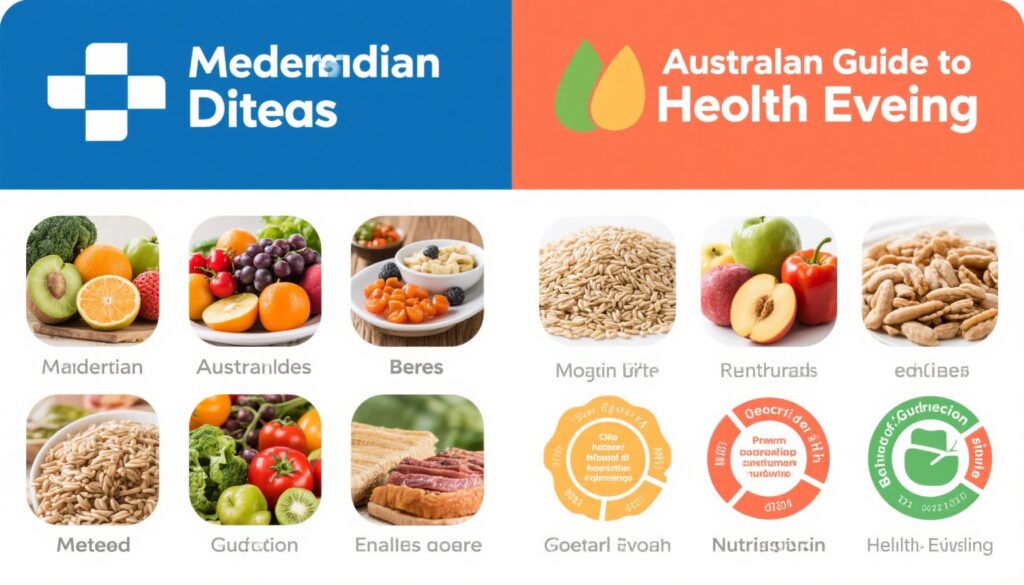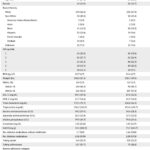Aims
The Mediterranean diet has been extensively studied and shown to reduce the risk of chronic diseases through its healthful eating patterns. In contrast, the Australian Guide to Healthy Eating (AGHE) provides a dietary model designed specifically for the preferences and habits of Australians. Despite the potential benefits of both diets, their comparative efficacy on body composition and glucose metabolism has not been thoroughly investigated. Therefore, this study aims to compare the effects of the Mediterranean diet against AGHE on body composition and glucose metabolism.
Materials and Methods
A randomized controlled trial was conducted with 57 participants (median age 31 years, interquartile range: 25-37 years; 71.9% female, BMI = 25.1 kg/m²). Participants were randomly assigned to either the Mediterranean diet group (23 participants) or the AGHE group (34 participants) for a duration of eight weeks. The AGHE is a set of dietary guidelines aimed at the general Australian population to promote health, well-being, and reduce the risk of non-communicable diseases. The guidelines recommend an increased intake of whole grains, fruits, and vegetables, alongside moderate consumption of seafood, lean meats, and low-fat dairy while limiting discretionary foods.
Participants following the AGHE received prescriptive guidelines tailored to their sex and age group regarding portions and servings of food groups, implemented through nutrition education facilitated by an Accredited Practicing Dietitian. Each participant attended a one-hour session with the dietitian, where they received materials including food group guides and portion size recommendations, emphasizing high-fiber, low-fat diets and reduced intake of discretionary foods. The AGHE was chosen as the control diet to provide a reflection of the current dietary advice for the Australian population.
Mediterranean Diet
The Mediterranean diet plan was developed based on the Mediterranean Diet Model in Australia, which adapts traditional eating patterns into a multicultural context, and utilizes methods validated by the PREDIMED study. Participants in this group received a detailed Mediterranean meal plan, including recipes and educational materials to support adherence during the eight-week intervention. An Accredited Practicing Dietitian also introduced these materials to participants during a one-hour clinical session.
Participants were encouraged to follow the Mediterranean diet principles in an ad libitum manner, allowing them the flexibility to choose food quantities and timing based on personal schedules. However, specific dietary suggestions were provided, such as increasing the intake of Extra Virgin Olive Oil (EVOO) to three to four tablespoons per day, including whole grains and fresh vegetables at each meal, consuming two serves of fruit and one serving of nuts daily, incorporating legumes at least twice a week, and eating a minimum of three servings of fish (preferably oily) each week. Moderate consumption of cheese and at least two servings of other dairy products per day were also recommended. Consumption of eggs was recommended to be limited to a maximum of three per week, while red wine should be consumed in moderation if participants chose to drink alcohol, adhering to standard serving sizes. Discretionary foods and red meat were advised to be minimized. An introductory Mediterranean diet food hamper was provided at the intervention’s commencement, containing items like EVOO, canned legumes, fish, and herbs to assist participants in familiarizing themselves with recommended food products.
The statistical analyses included paired t-tests for within-group comparisons and analysis of covariance (ANOVA) for between-group comparisons, with adjustments made for age and baseline observations.
Results
At the conclusion of the intervention, the Mediterranean diet group exhibited significant reductions in waist circumference (−1.3 cm, p = 0.043), body fat percentage (−1.8%, p = 0.014), resting metabolic rate (RMR) (−17.9 kcal/day, p = 0.02), and fasting insulin concentration (−1.2 μIU/mL, p = 0.016). In contrast, there was a significant increase in body lean mass percentage (1.7%, p = 0.015) observed compared to the AGHE group.
Conclusion
The results of this study indicate that the Mediterranean diet is more effective than the AGHE in enhancing body composition and managing metabolic factors. These findings suggest that the Mediterranean diet could be a viable option for improving health outcomes related to obesity and metabolic conditions. However, to substantiate these results and delve into potential underlying mechanisms, further large-scale, well-designed clinical trials are warranted.
Reference
Kabthymer RH, Danaher J, de Courten B. Mediterranean diet vs. the Australian guide to healthy eating (AGHE) on body composition and glucose metabolism: A randomized controlled trial. Diabetes Obes Metab. 2025 Sep;27(9):4689-4698. doi: 10.1111/dom.16458. Epub 2025 Jun 20. PMID: 40538368; PMCID: PMC12327167.



